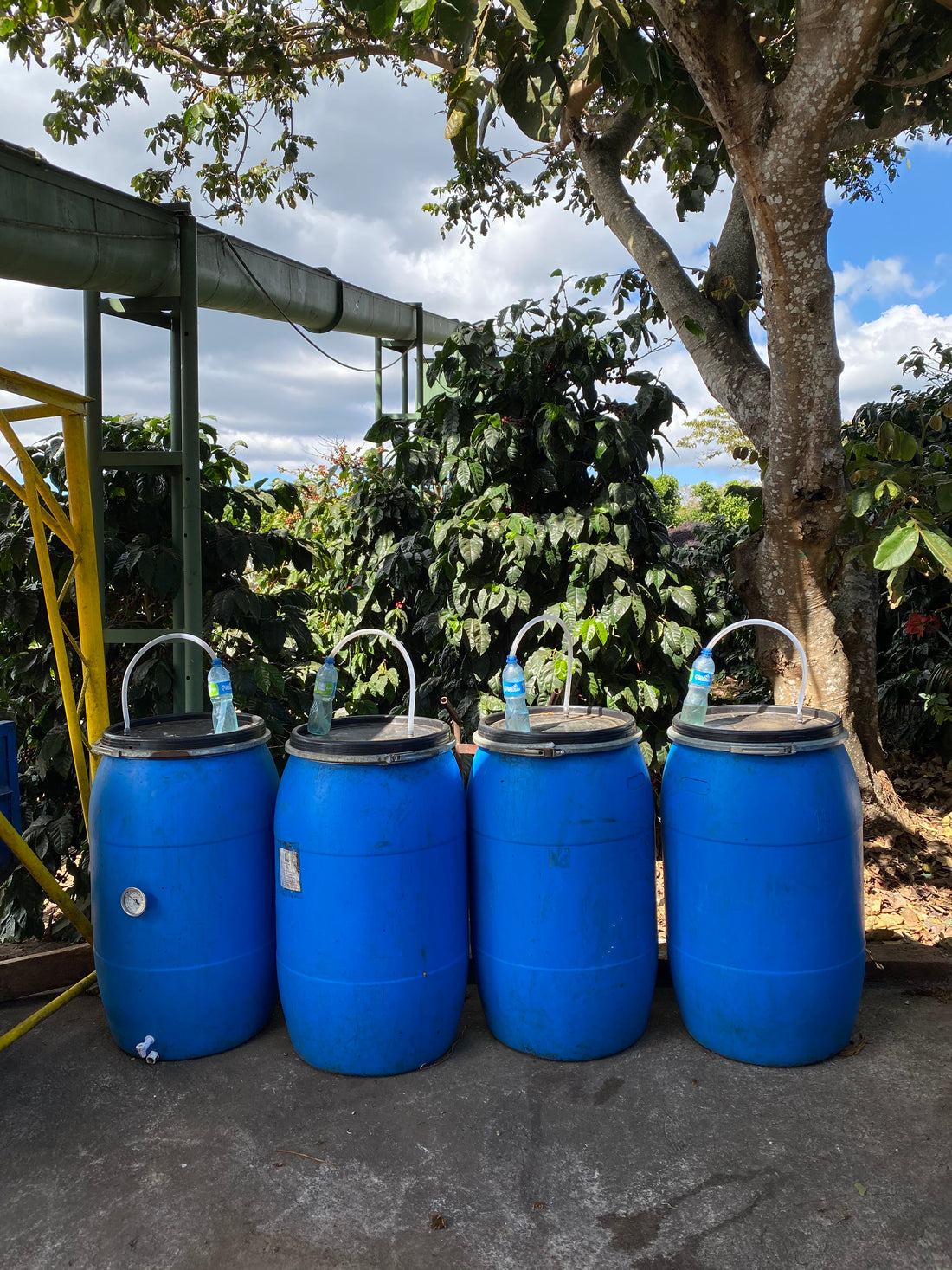
Anaerobic fermentation...
Share
Anaerobic fermentation or oxygen free fermentation is a new method where coffee is processed in a fully sealed and oxygen deprived fermentation tank or bag.
At some point all coffees go through some sort of fermentation, from naturals to washed. This process is when yeast and bacteria begin converting the sugars and acids in the mucilage. As an effect of this reaction, organic acids, carbon dioxide, ethyl alcohol and other compounds work until there is nothing to work with, or until the environment starves them of the conditions to react.
Under normal circumstances, the cherries are hand-picked to ensure perfect maturity, then washed to remove juice excreted during the picking process. On progressive farms they measure the Brix levels of the cherries, and anything with a higher Brix of 23 goes to the Anaerobic tanks, anything below will be used as a naturally processed coffee.
After 24-48 hours in the tank, the anaerobic process causes a huge build-up of CO2 pressure in the tank. This pressure forces the flavours of the mucilage into the coffee parchment. After fermentation the cherries are removed and left to dry with the skins or cascara still intact, resulting in the halting of the fermentation stage.
The end result of this type of fermentation offers some interesting flavours with a combination of washed and natural, with bright clean fruit and sweetness.
There is an element of secrecy in this type of process and it also differs from producer to producer, country to country. It gives the producer greater control over the sugars, temperature, pressure, pH and length of ferment, thus engineering a unique flavour profile.
Even though this process has been used in many other food and beverage fields, this has become a new phenomena for coffee producers and consumers have started to enjoy further exploring the unique flavours of coffee through process experimentation.
You can see the tanks being stored under the shade, to avoid direct sunlight. There is also a release valve attached to the top of the tank to offer release to the CO2 buildup. Also a temperature gauge to analyse and control the tanks thermal temperature.


